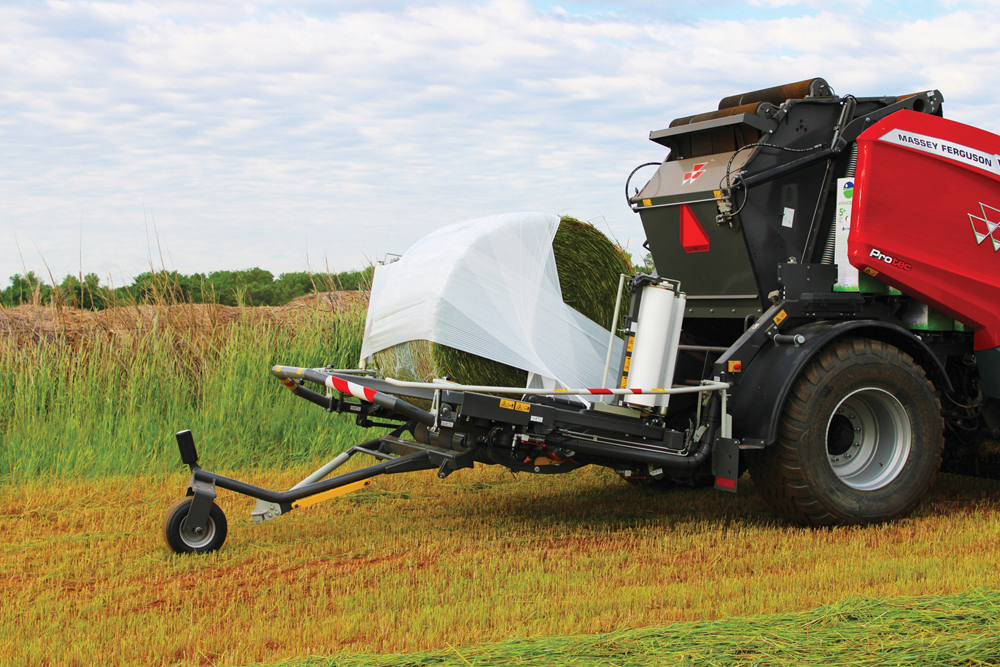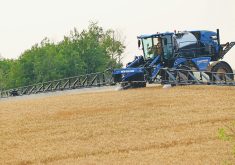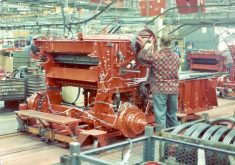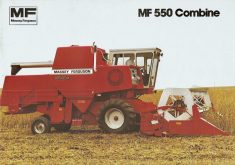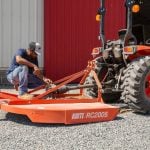Glacier FarmMedia – AGCO has added the RB 4160P Protec combination baler and wrapper to its Massey Ferguson line of equipment.
The unit combines all the features found on the Massey RB series silage balers, which debuted in 2018, with an integrated bale-wrapping unit that allows producers to harvest and ensile high-moisture forages in one pass.
“In climates with high humidity and lots of rain, putting up hay traditionally can be a challenge, so many forage growers are turning to baled silage,” says Dane Mosel, marketing product specialist for hay and forage at AGCO.
Read Also
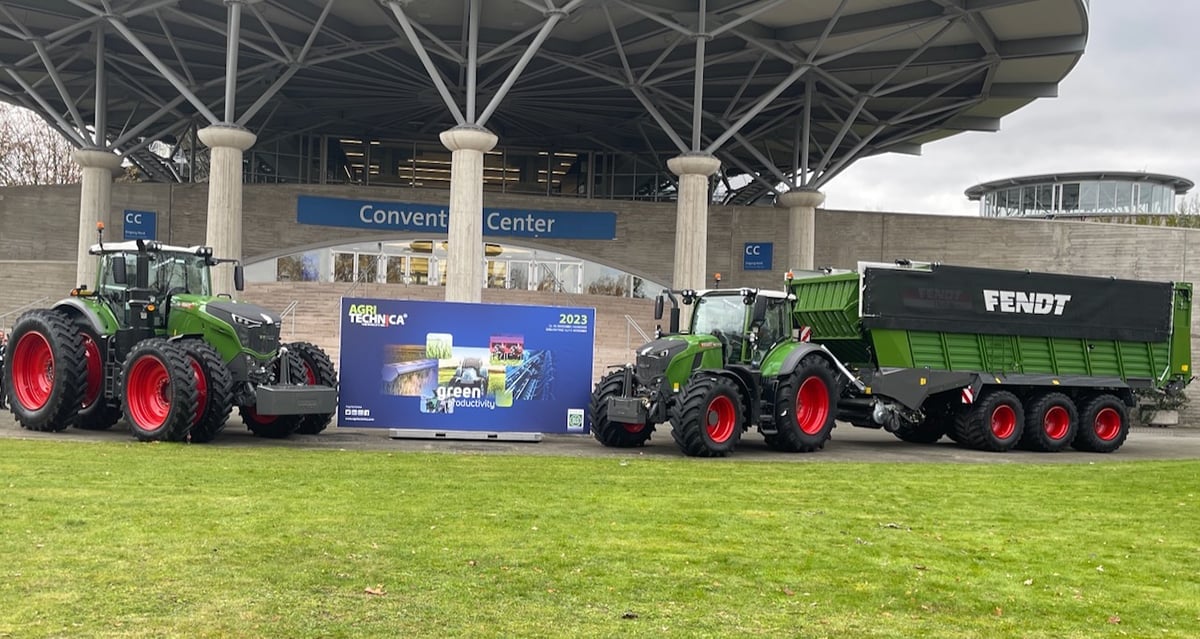
Canada to have increased presence at Agritechnica 2025
Interest in diversifying trade markets is taking more Canadian manufacturers to Agritechnica 2025, the world’s largest machinery show.
“Not only do they avoid the drydown issues, but they can harvest their forage at the ideal growth stage for maximum nutritional value.”
In addition to creating plastic-wrapped bales, the RB 4160P Protec can mesh wrap them before they are bagged as silage, as well as bale dry hay, straw and even coarse material such as corn stover.
Mosel says wrapping a silage bale as soon as it leaves the bale chamber creates a higher protein feed source by eliminating the nutrient loss that occurs as bales sit exposed to the elements.
“It takes less than a minute from the time forage enters the Protec’s pickup to the time the wrapped bale is released,” he says. “That preserves the nutritional quality. Feeding such premium-quality forage may actually lower ration costs because you don’t need to feed as much or need as many supplements.”

In recent years AGCO has added agronomists to its staff to look at how using its various machines through the season affects crops.
In 2020, its hay and forage specialist, Jessica Williamson, conducted a field trial comparing forage quality from silage bales that were wrapped at varying intervals after baling. She found that delaying the wrapping process by as little as 24 hours led to a nearly four per cent decrease in the availability of digestible proteins, as well as reductions in total digestible nutrients and volatile fatty acid score, an indicator of the success of the ensiling process.
Mosel notes that inline tube wrapping delays the ensiling process because the bales must first be moved to the field edge or a central location. Air can also be trapped in the space between tube-wrapped bales, reducing effective fermentation and reducing feed value.
Quality may also be lost when the tube is opened and oxygen is reintroduced to the bales inside. Wrapping a bale immediately after it’s formed eliminates those losses.
“Once that seal is broken, the forage inside is susceptible to spoilage, especially when the weather gets warm,” Mosel adds. “That’s not a concern when bales are wrapped individually. They also can be transported, stored or sold with relative ease.”
The Protec baler rides on high-flotation tires to better handle the machine’s significant 14,000-pound weight. The baler components, including pickup, bale chamber and net-wrap system, are identical to the RB 4160V silage baler, which produces four- by five-foot bales.
It feeds through a 73-inch-wide cam-less pickup. Because there is no cam track, there are fewer moving parts, making the baler quieter and more reliable and requiring less maintenance and fewer adjustments.
The RB 4160P Protec also uses two banks of Xtracut hydraulically operated knives. Operators can select zero, eight, nine or 17 knives to get forage cuts as small as 2.65 inches in length, allowing for improved forage digestibility. Once the crop is inside the bale chamber, the Constant Pressure System (CPS) ensures density remains consistent through the entire baling process, the brand claims.
“The denser the bale, the less oxygen when it’s wrapped, which improves the ensiling process,” Mosel says, adding that the Protec’s variable chamber forms bales that are four feet wide and 35.5 to 63 inches in diameter.

The baler’s wrapping unit can wrap silage bales that weigh up to nearly 3,000 pounds. But it still has an overall compact size, making it easy to store in a shed or to transport.
In addition to two rolls of net wrap, the RB 4160P Protec can carry 14 rolls of 750-millimetre or 500-millimetre film on board. Three film pre-stretching options are available, depending on manufacturer recommendations.
“With that amount of mesh and film, the unit can wrap 224 bales in eight layers of plastic or up to 280 bales in six layers, so the Protec can run all day,” says Mosel, adding that the Easy Load System makes mesh roll replacement easy.
“Sensors automatically detect if film breaks or if a roll runs out, and the baler compensates to ensure that bales are always completely wrapped.”
An operator can track bale formation, control cutter engagement and select knife banks all from the E-link Pro touch-screen monitor inside the tractor cab. Even a plugged pickup can be cleared from the cab thanks to the HydroFlex Control system, which uses a hydraulically controlled floating floor.
“Should the baler get plugged, the operator can disengage the knives and lower the rear of the feed table floor from the in-cab monitor, allowing the crop to enter the bale chamber,” Mosel explains. “Then, the machine can be re-engaged and baling can continue. There’s no jumping out of the cab. No need to get hot, sweaty and dirty crawling under the baler.”
The RB 4160P Protec comes standard with a rear-mounted camera, providing the operator with a view of the wrapping table and the ability to monitor bale transfer, wrapping and release. When it comes to maintenance, the baler features easy-to-access grease banks and an automatic chain lube system.
“It’s an all-in-one solution for forage,” says Mosel.
Scott Garvey is a machinery contributor for Glacier FarmMedia. His article was originally published at Grainews.


